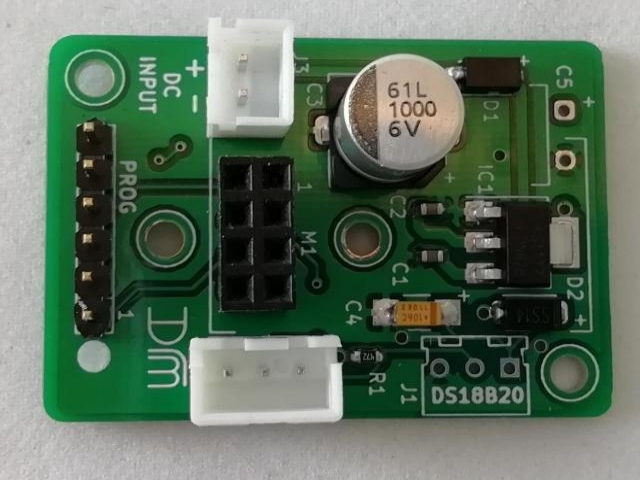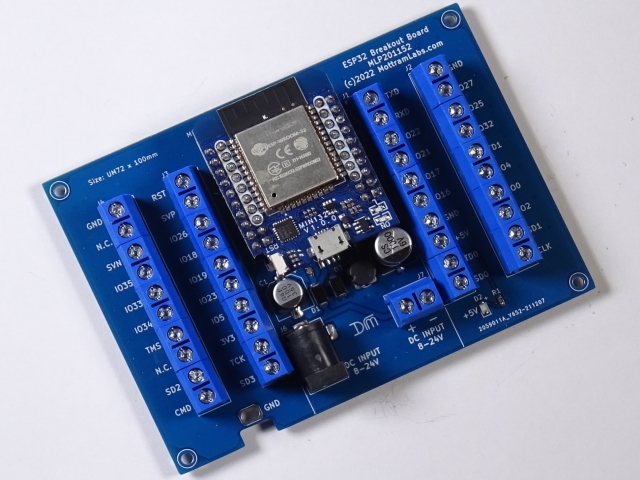
ESP32 Breakout Board
A breakout board for the popular Wemos D1 ESP32 boards. Screw terminals are provided for each of the 40 pins on the ESP32 board. Also provided a 5V regulator with a wide input voltage range.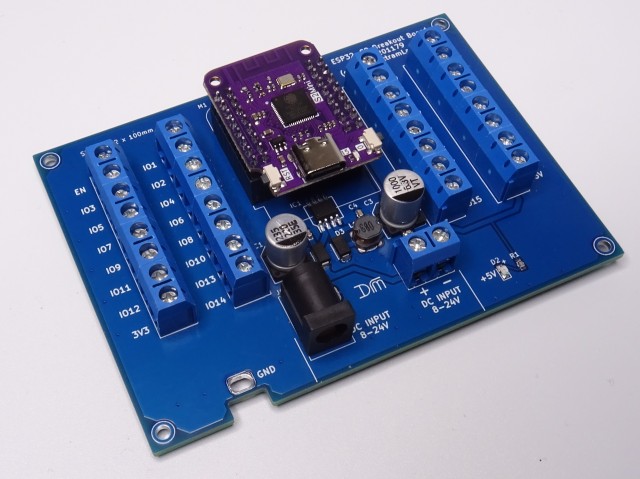
ESP32 Breakout Board
A breakout board for the popular LOLIN/Wemos ESP32-S2 boards. Screw terminals are provided for each of the 32 pins on the ESP32-S2 board. Also provided a 5V regulator with a wide input voltage range.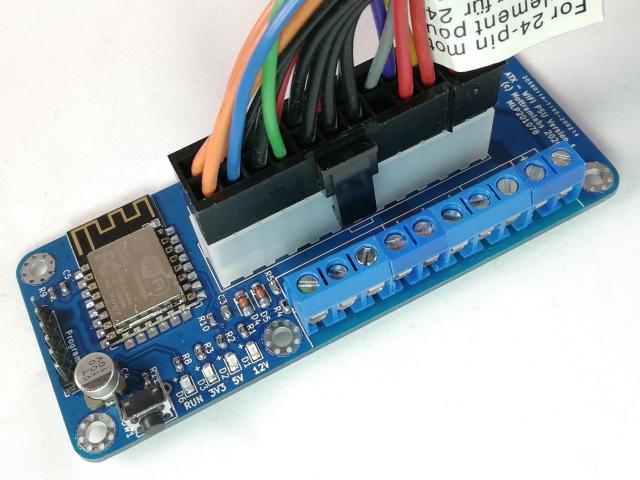
Wi-Fi controlled PC ATX PSU
An interface PCB capable of turning on/standby a PC ATX style Power Supply. The board accepts an ESP12 type WiFi module (not included) and is used to control the PSU’s PS-On signal (pin 16).LED’s are provided for each DC supply output plus an LED and push button for local control.
Ideal for powering LED lighting strips using cheap ready available power supplies and controlled by WiFi.
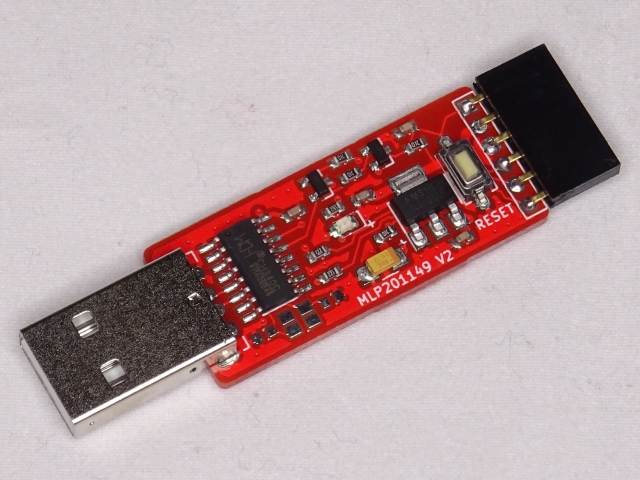
ESP Programmer New Version
A USB programmer for the ESP8266 or ESP32 chips from Espressif Systems. This board uses the CH340 USB to serial interface to program the ESP devices. The board also uses the GPIO0 and Reset lines to aid programming, just as Wemos and NodeMCU development modules. Using an external programmer makes the target board easier and cheaper to build without the USB interface, this also aids with lower power modes used for battery operation. Not having to power the USB interface can save precious battery power.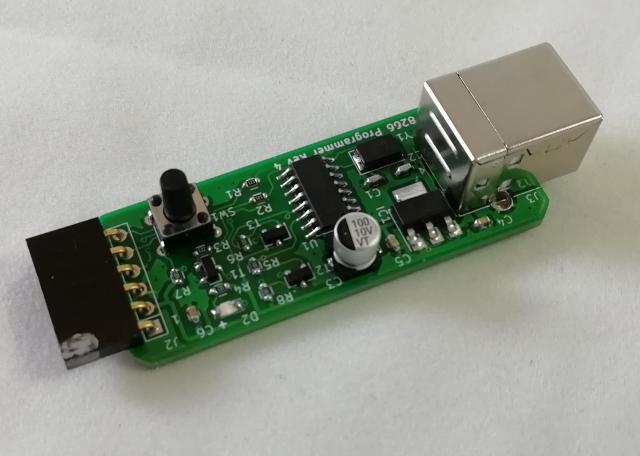
ESP Programmer
A USB programmer for the ESP8266 or ESP32 chips from Espressif Systems. This board uses the CH340 USB to serial interface to program the ESP devices. The board also uses the GPIO0 and Reset lines to aid programming, just as Wemos and NodeMCU development modules. Using an external programmer makes the target board easier and cheaper to build without the USB interface, this also aids with lower power modes used for battery operation. Not having to power the USB interface can save precious battery power.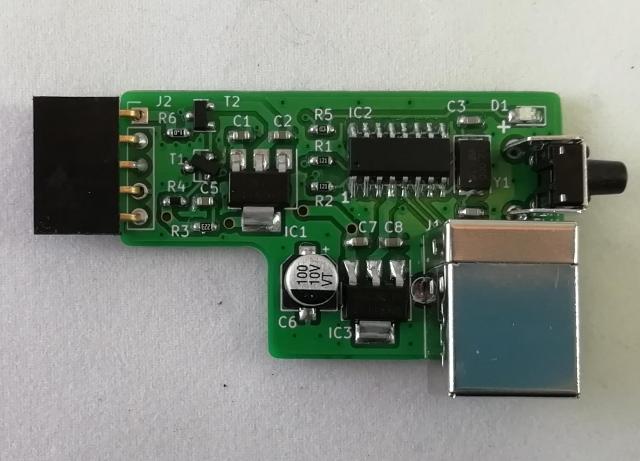
USB Programmer for Sonoff Relays
A USB programmer is for the ESP8266 used on the Sonoff Relay modules.To set the ESP8266 into programming mode.
Press and hold the push button on the Relay board (GPIO0).
Press and release the power button on the programmer.
Program the device and keep the relays push button pressed until done.
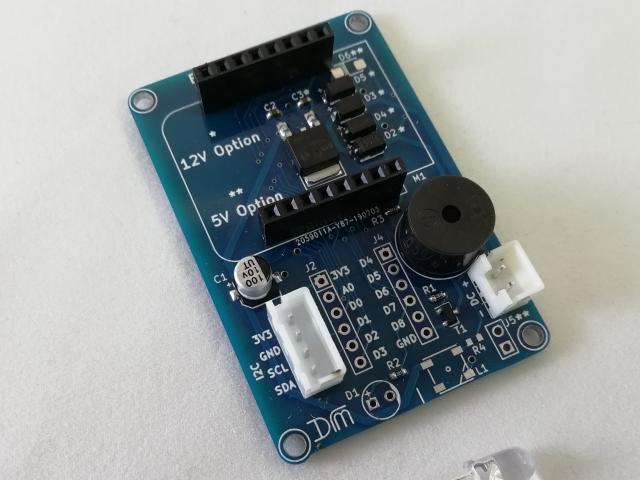
Wemos I2C Sensor Board
For use with any I2C sensor such as the popular UV VEML6070.
The board has on-board 5V regulator so can be power by an external 12V supply.
Also mounted on the board is a speaker with transistor driver.
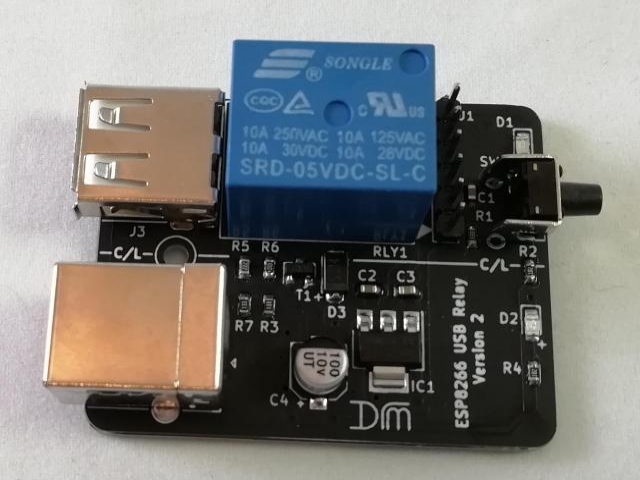
USB Relay
A USB powered relay for controlling anything USB powered via WiFi.
Uses a ESP-12 module to control a relay, only the power is controlled the data lines are permanently connected.
Also included are a couple of LED indicators and a push button for local control.
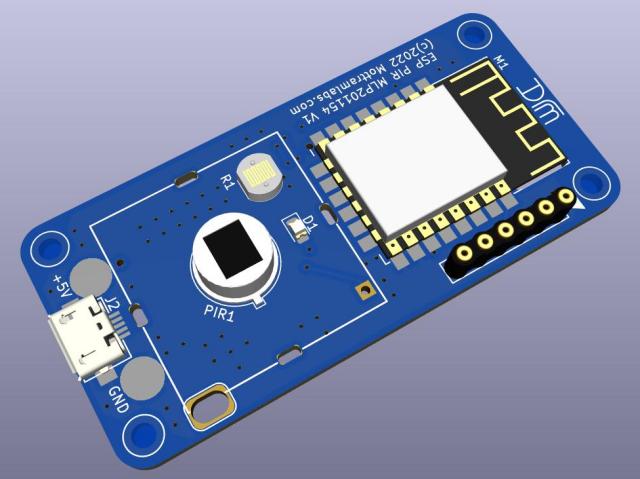
ESP8266 PIR Sensor - AM312
A simple but useful PIR motion sensor with Wi-Fi. Uses an AM312 PIR sensor